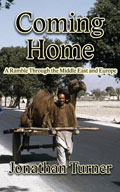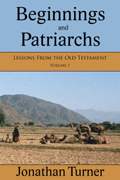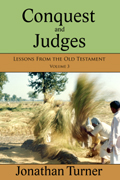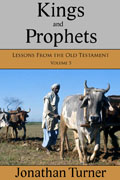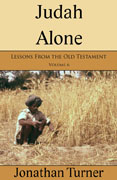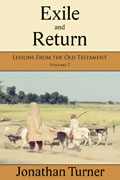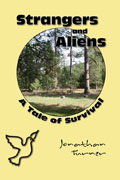I’m a fan of expository speaking. Lest someone misunderstand, I fully agree that there is a time and place for topical sermons. Generally, however, I think the church is far better served by a steady diet of consistent, systematic explanation of the biblical text. There are lots of advantages to the expository approach. For one thing, it helps counteract the tendency of preachers to ride their favorite hobby horses. It forces you to talk about the subjects actually in the text rather than the enthusiasm of the day. Similarly, systematic expository speaking forces you to deal with the difficult and hard subjects you’d rather avoid. For example, it may not be politically correct to talk about adultery and divorce. But, if you’re doing an expository series on the “Sermon on the Mount,” you can’t sweep under the rug what Jesus had to say on the subject – regardless of whether it happens to offend somebody. In short, expository speaking is more likely to provide a congregation with a healthier and balanced diet than other approaches.
However, this brings up a related problem. We might need to provide explanations of the biblical text, but how can we make it interesting? How can we be faithful to the text without a sermon becoming a dry-as-dust commentary? In what sort of package should we convey content?
Let me approach the answers to these questions in a round about way:
The problem of how best to convey content has become even more important to me as I’ve branched out into writing books – particularly novels. Writing is a discipline as well as an art. I’m still learning my craft. In the process I’m trying to assimilate all the writing advice I can. There’s a lot to learn. On the “macro” level there are things like plot, structure, character, voice and world building. While there’s no doubt I need to work on those things, I still struggle with some of the more mechanical aspects of writing. Avoiding the more common pitfalls has not yet become as instinctive as it should.
Writing books and blogs are remarkably consistent in their lists of what to avoid. For example, “show, don’t tell” is a mantra common to all of them. They insist that we should replace adverbs – particularly those ending in “ly” – with strong active verbs. They are death on the use of passive voice – the subject of a sentence should act rather than be acted upon. (See what I did there?!) They say not to use the verb “to be.” Here’s a passage from one writing book:
“Worst of all to be’s forms is the past perfect tense. You can recognize it by the word had – a red flag of danger in your story every time.
“For had describes not just a static state, but a static state in the past: “He had traveled far that day.” “I never had realized how much I loved her.”
“Each had makes your story jerk, because it jars your reader out of the present action and throws him back into history.
“…throw in enough… hads, and your story grinds to an aching, quaking halt. Forward movement stops. Your reader finds himself bogged down in history.
“This is the kiss of death. No one can change what’s already happened. To waste any time on it is, at best, an irritation…” (Dwight V. Swain, Techniques Of The Selling Writer, University of Oklahoma Press, 1965, p. 28)
As valuable as the advise on the rules of writing may be, it doesn’t give the whole picture. Recently I re-read an old favorite of mine, The Fellowship Of The Ring by J.R.R. Tolkien. With the “rules” of writing stuck in my head, having just edited a book of my own, I found the following passage amusing:
“The hobbits had been nearly two months in the House of Elrond, and November had gone by with the last shreds of autumn, and December was passing, when the scouts began to return. Some had gone north beyond the springs of the Hoarwell into the Ettenmoors; and others had gone west, and with the help of Aragorn and the Rangers had searched the lands far down the Greyflood, as far as Tharbad, where the old North Road crossed the river by a ruined town. Many had gone east and south; and some of these had crossed the Mountains and entered Mirkwood, while others had climbed the pass at the source of the Gladden River, and had come down into Wilderland and over the Gladden Fields and so at length had reached the old home of Radagast at Rhosgobel. Radagast was not there; and they had returned over the high pass that was called the Dimrill Stair. The sons of Elrond, Elladan and Elrohir, were the last to return; they had made a great journey, passing down the Silverlode into a strange country, but of their errand they would not speak to any save to Elrond.”
In that one paragraph I count twelve instances of the past perfect tense and one instance of the passive voice!
A couple of pages later we find this:
“The Sword of Elendil was forged anew by Elvish smiths, and on its blade was traced a device of seven stars set between the crescent Moon and the rayed Sun, and about them was written many runes; for Aragorn son of Arathorn was going to war upon the marches of Mordor. Very bright was that sword when it was made whole again; the light of the sun shone redly in it, and the light of the moon shone cold, and its edge was hard and keen. And Aragorn gave it a new name and called it Andúril, Flame of the West.”
By my count, that one paragraph contains four examples of the passive voice!
Tolkien also seems overly fond of adverbs and “filler words.” (See what I did there?!) Here are just a few examples to illustrate the point: “At that moment Elrond came out with Gandalf…” “Suddenly Aragorn leapt to his feet.” “Suddenly Gimli, who had pressed on ahead…” “Sam stood sullenly by the pony…” “Then slowly on the surface, where the wizard’s hands had passed…” “At that moment from far off the wind bore to their listening ears the howling of wolves.” “Pippin felt curiously attracted by the well.” “…the road sloped down swiftly…” “They stumbled wildly up the great stairs…”
Such phrases litter Tolkien’s writing.
According to the pundits all of these are examples of poor or careless writing. Yet, there is no question that The Lord Of The Rings epic is one of the most seminal, influential and important pieces of literature of the 20th century. It is a classic which endures. The books have inspired and given hope to tens of thousands. They have impacted whole generations. Millions of people count the books among their favorites.
How can a work be so beloved when the writing is so “bad”? One possibility is that the experts are wrong. Perhaps the generous use of adverbs and the passive voice are not always indications of poor writing after all. It’s fairer to say that the experts are right, but that it is a mistake to take a generality and turn it into a rigid rule. A master of his craft like Tolkien can deliberately “break” the rules to create the effect and mood he wants to evoke.
However, the more complete answer is that story trumps presentation. Tolkien’s world is so rich, deep, layered and consistent, his story is so sweeping and compelling that we are more than willing to overlook his relatively minor sins of presentation. The story carries us along. It moves us. We care about the characters. We feel with them. We see the reflections of their victories and defeats in our own souls. Their heroism, valor and integrity moves us to become more heroic, more valorous and true. Similarly, we can relate to their indecision and sorrow. Who can remain untouched by the Lady Galadriel’s choice who, when offered the Great Ring, remains true to herself even though it means she must diminish and lose all that she loves and has fought for in Middle Earth?
The concept of story, I think, provides the key to making our expository teaching and speaking effective and powerful. We need to find ways of being true to the text while, at the same time, making the content relevant and useful to the hearer. We can use the elements of story to bridge the gap.
Here’s an example of the kind of thing I’m talking about: The first chapter of the book of Ruth portrays one of the main characters, Naomi, as a bitter woman with a grievance against God. She is so out of sorts that she even tells the women of Bethlehem to call her Mara, which means bitter. One of the questions we need to ask when reading the text is why Naomi is bitter. What is it that brought on the state she is in? After studying the passage we can legitimately conclude that if we reject God’s discipline (God promised there wouldn’t be any famine if the Israelites obeyed the Law) it will lead us to rationalize and justify further wrongdoing (moving to Moab and marrying her sons to Moabite girls, which God said not to do). This, in turn, leads us to deny any responsibility for the consequences of what we’ve done. Denial of our own responsibility causes us to blame someone else – namely, God. We can’t trust God when we’re blaming Him. Therefore, we become bitter towards Him.
This is fine, as far as it goes. The teaching is plain and concise. But even though I used the word “we” it’s still abstract, head knowledge. It doesn’t grab our emotions. We can present the same information more effectively by looking at the situation through Naomi’s eyes.
Imagine her saying this: “There’s a famine in Bethlehem, if we want to eat we’ll have to go somewhere else. They’ve got plenty of food in Moab. Let’s go there. Well, we’re in Moab not Israel, who else is there to marry but a Moabitess? I’m sorry that she’s a pagan, but would you please show me someone around here who isn’t? Hey, I’m not to blame for what happened, God’s the one who forced us to move here. Some God He is! He makes us come down here and then kills my family and leaves me saddled with a couple of pagan daughters-in-law.”
Looking at the situation from Naomi’s perspective helps us to empathize with her and internalize the lesson. We start to feel her emotions instead of just looking at her actions.
Here’s another example of the kind of thing which can be done with story elements in expository presentations. This is an excerpt from a sermon I delivered on John, chapter 21. Notice how I express the implications of what Jesus and Peter said by couching it in the form of further conversation. I think it is more effective than merely explaining the meaning of what they said.
“After breakfast Jesus took the initiative and asked Peter a question. It’s probably significant that Jesus didn’t address Peter by the name that He, Himself, had given him. He called him Simon instead of Peter. There was still some unfinished business between the two. Peter had denied Jesus. He had acted according to his old nature rather than as the rock Jesus had called him. They were seated around a charcoal fire. This was probably something which Jesus had arranged deliberately. No doubt, it brought to Peter’s mind the other charcoal fire which had led to his downfall. It was time for Peter to make another choice and get his priorities straight.
“Jesus asked, “…do you truly love me more than these?” (John 21:15 NIV) It’s not clear exactly what Jesus meant. Did He mean, “Do you really love me more than the other disciples do?” In the upper room, shortly before the crucifixion, Peter made the boast, “…Even if all fall away on account of you, I never will.” (Matthew 26:33 NIV) In spite of the boast, he fell. Now Jesus was asking whether he still thought he was better than the other disciples.
“There’s another possibility, too. By referring to “these” Jesus might have meant the boat and the net. In other words, “Am I more important to you than your business and occupation?”
“The word Jesus used for love is “agape”. It is the kind of love which God has. It is not a feeling. It is the decision or act of the will to do whatever is best for the object of your love. It is the kind of sacrificial love which gives for the benefit of the other.
“It’s interesting that in his reply, Peter didn’t use “agape”. Instead, he used the word “phileo” which means affection. “Yes Lord, you’re aware that I’m fond of you.”
“Jesus didn’t debate Peter. Instead He issued him a directive: “Feed my lambs.” Our love for the Lord is not demonstrated by our words, but by doing the work He has given us to do. “Peter, you’ve been throwing your weight around and talking like a big-shot. But I need somebody who will be gentle and show kindness to those who are weak and vulnerable. Part of loving me is nurturing the people I entrust to you.”
“It must have been a relief to Peter that Jesus still accepted him and trusted him to do an important task. But it must have been disconcerting when, a little while later, Jesus repeated the question. Jesus again used the word “agape” and Peter again replied with “phileo.” This time, Jesus told him to “Take care of my sheep.” (John 21:16 NIV) “Peter, you’ve gone back to fishing, but I’ve called you to something else. You’re supposed to be a shepherd. Is your affection for me strong enough to make you switch careers?”
“Peter had denied Jesus three times. Jesus asked Peter three times whether he loved Him. The first two times, Jesus used the word “agape.” The third time, Jesus used “phileo.” “Peter, do you even have the affection for me you say you do?”
“This time, Peter was hurt. In his reply he said, “You know that I do!” Jesus, again, told Peter to feed His sheep. And, Jesus took it further. He told Peter how he was going to die. “Peter, in the upper room you said that you were willing to die for me. You’ve just said, three times, that you care for me. Is your love strong enough to see it through?”
“Peter learned his lesson well. From the way John phrases it, it is clear that Peter had already been executed for his faith at the time John wrote. And, John says that Peter glorified God in his death. Jesus’ trust in Peter was not misplaced.”
Granted, it’s a lot easier to do this sort of thing with narrative passages than it is with doctrinal arguments like the first few chapters of Romans or Hebrews. But it’s not impossible. Theological exposition doesn’t have to be dull. At the very least, we can incorporate story in the illustrations we use to make our points. Jesus did it all the time when He told the parables.
I’m of the opinion that the more we learn to use the elements of story, the more effective we will become in presenting content. It is story which touches our emotions and causes us to care about the information our minds perceive.
